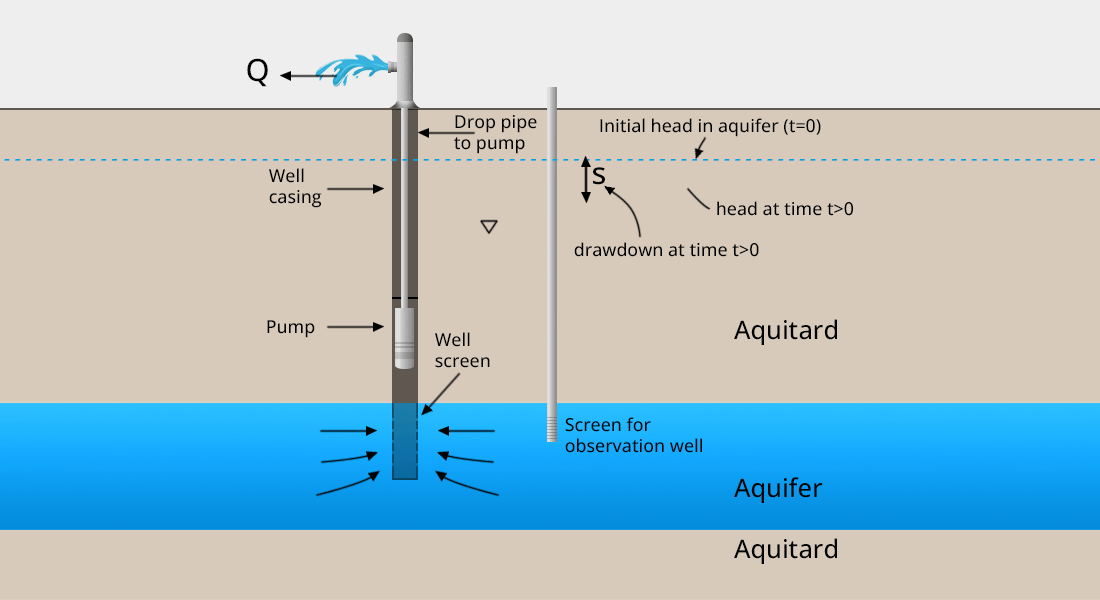Well Testing
Ketek Infinity tests, monitors, services and controls wells

What is a Well Test?
Wells are dug for a variety of reasons, and depending on their purpose there are three broad categories of testing: groundwater sampling; aquifer testing and injection testing.
Groundwater Sampling
Clients often need to sample groundwater. Proper practice is to pump out at least three times the volume of water in the well before taking a sample to ensure an accurate, representative sample and not get any contaminants from stagnation.
Aquifer Testing (Pump Testing)
Clients often want to understand the flow characteristics of the aquifer into which a well is drilled. Obtaining accurate data is paramount for hydrogeologists to establish these characteristics.
Pump tests are now mandatory in Alberta on all newly constructed wells or wells deepened to access a lower aquifer. Using pump test data, a pumping rate or “safe yield” can be calculated. Alberta’s safe yield is the rate at which a given well could pump continuously for 20 years.
Reliability of the equipment is a fundamental requirement to an accurate pump test and an important strength of Ketek Infinity.
Injection Testing
Wells are sometimes installed to be used for fluid disposal. To test the effectiveness of the well for this purpose, pumping must be done at elevated pressures with appropriate monitoring. It is vital that the field crew have a thorough knowledge of the equipment and the process to conduct the test properly.
Well Monitoring
The consistent and reliable operation of a groundwater well observation network is vital and often a requirement of regulators and facility operators. These wells are likely installed for the purpose of aquifer depressurization, tailings seepage capture or general environmental monitoring. Through appropriate monitoring, the Ketek Infinity team can extend the life of your well systems and your equipment.
Things to Consider
- Proper sizing will ensure that pumps operate at optimum capacity and therefore last longer;
- Qualified pump installation will ensure that the well (specifically the screen) remains competent;
- Pump placement (in relation to the screen) will dictate how it is installed to protect the motor; and
- Attention to the equipment minimizes failures. In the event of a failure, monitoring decreases the turnaround time for repair.

